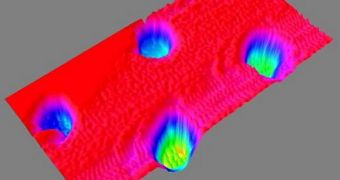Scientists from the San Diego, California-based Malin Space Science Systems (MSSS) announce that they finished working on the Mast Camera (Mastcam) instrument that will go on NASA's new rover.
The Mars Science Laboratory (MSL) rover Curiosity will feature the ability to snap images of the Red Planet in 3D, an ability that will increase its scientific return several times over. The robot's mast will feature two MSSS-built cameras, that will complement each other.
Scheduled for launch later this year, the MSL mission is the most complex ever sent to another planet. Its main component is the 1-ton, Mini Cooper-sized explorations rover, which is powered by nuclear energy, and features lasers that can vaporize rocks from a great distance.
Inside the rover's belly, NASA experts installed ovens that can be used to burn soil samples. Using spectrometers, the resulting gas is then analyzed, and any potential signs of organic or biological compounds detected in the data.
Back to Mastcam, it's important to note that the right-hand camera is outfitted with a telephoto lens, an option that NASA made after figuring out first-hand that such a lens is essential. As became obvious as the MER Opportunity was trying to investigate a very large crater, back in 2004.
“We tried to get over and study it, but the rover could not negotiate the steep slope. We all desperately coveted a telephoto lens,” says MSS Mastcam principal investigator Michael Malin. He was the one to propose that the instrument be outfitted to Curiosity in the first place.
The left-hand camera is outfitted with a medium-angle lens. Experts believe that this setup will enable the MSL to get a broader, context view of the areas it will analyze, while at the same time extracting as many details from the photos as possible.
The 8-gigabyte flash memory that MSL will carry will enable the two cameras to capture and store thousands of full-color images, before downloading them to Earth. Curiosity will also be able to produce HD videos of Mars, at a rate of 8 frames per second, Daily Galaxy reports.
Malin Space Science Systems built the Mastcam instrument. It will also operate the instrument for NASA. Malin also participated in the NASA Viking missions to Mars, which took place back in the 1970s.
The company also provided the Mars Orbiter Camera for the NASA Mars Global Surveyor mission, and its main scientist is the principal investigator for both the Context Camera and the Mars Color Imager on the NASA Mars Reconnaissance Orbiter.

 14 DAY TRIAL //
14 DAY TRIAL //